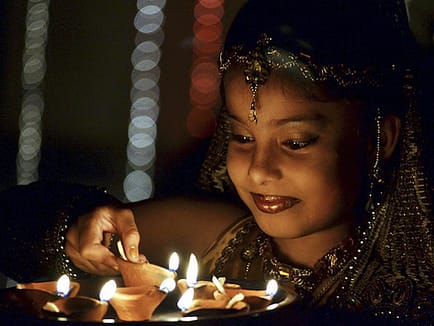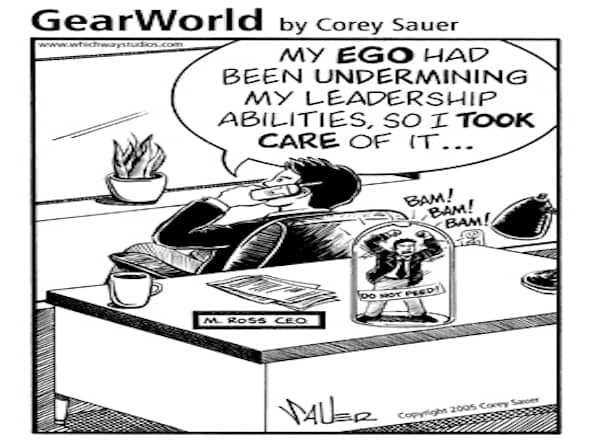 Diwali: Can each one of us be a ray of hope in celebration of the festival of lights?
Diwali: Can each one of us be a ray of hope in celebration of the festival of lights?
Through The Eyes Of A Child
Diwali celebrations hold special significance not just for the people of India but for people all across the world. While growing up, I looked forward to the occasion. My grandmother would wake me up early in the morning, rub oil all over me & then bathe me with shikakai & besan. Then I’d burst firecrackers with other children & we would go around distributing sweets to the entire building. In the evenings I’d accompany my grandmother to Siddhivinayak temple & offer free food to all the beggars lined up outside.
Diwali is burned in our memories as the days of celebration, happiness & gaiety, spread over five days. When we think of Diwali, we think of lights, firecrackers & sweets. Growing up is universally similar for most of us & yet each one of us have certain dominant experiences unique to ourselves.
Unique to me, are the faces of those beggars, both young & old alike, dressed in rags, holding out their paper plates as we went about distributing pau bhaji. Some would ask for a second helping & my grandmother would sternly tell them to wait their turn until all had been served. Among those, were children my age & I’d ask my grandmother, why she had to be so rude. Occasionally, I’d sneak an extra pau to a child while my grandmother looked the other way.
When The Children Cry
Years later, I saw a documentary film called “Tragedy Buried in Happiness” by a Human Rights Organization that showed children working at a fireworks unit in Sivakasi, the capital of fireworks industry in India. Children, aged between 6 to 14 were exposed to harmful chemicals such as potassium nitrate & gunpowder that is damaging to their health, safety & development. Sivakasi was more recently in the news for a fire breakout at Om Shakti Fireworks Industries in which many died & several others were injured.
Sivakasi is a town located in the Virudhunagar district of Tamil Nadu. It accounts for almost all the fireworks output in India at an estimated worth of Rs.20 billion & employs roughly 2 lakh people. According to a study by ASSOCHAM (Associated Chambers of Commerce & Industry of India), the fireworks industry is in a slump. Manufacturing firecrackers is becoming a cottage industry. Companies outsource work to contractors who assign tasks to individuals working out of homes.
Children form a chunk of these labourers. The campaign against child labour & safety of employees in the fireworks industry is ages old & although Sivakasi district claims 100 percent literacy today, it could well be an eye wash. While Government statistics say that there are 20 million child labourers in India, NGOs claim that the numbers are much higher.
The documentary showed children sticking out yellow palms which were the result of cyanide in the gum that the children used during work. Firework ingredients often come from elements that need to be mined. The mining industry is no less a villain in employing children & probably worse. Sweets form an important part of Diwali celebrations & while we wouldn’t think twice about spending exorbitantly on sweets, the children working in sweet shops earn not more than Rs.300 to Rs.800 a month. Not to mention their deplorable working conditions which is nothing short of modern day slavery.
The Dawn Of Evil
Flash back to 1998. I was in Wardha on a holiday to spend time with my parents. The door bell rang while I was having my breakfast & in walked a friend. Happy to see her, I greeted her gregariously but she just stood at the door, trembling & ominously quiet. I asked, “What?” & she burst into tears, shaking uncontrollably. Someone had poisoned a stray puppy that she used to feed. She had gone to give him his daily quota of milk & had found him collapsed & frothing at the mouth. An hour later he was dead. The children in the locality told that some local doctor had fed him poisoned Diwali sweets. Later that day, I met Ashish Goswami, an independent animal rights activist who set up the first PFA unit in Wardha in 1999. Ever since then, every year, it has been home to animals that have suffered similar fates during Diwali.
A few years ago, a calf was brought in, his face torn apart from swallowing an active bomb. For two days he battled for his life & then died. Rockets zoom into trees, killing birds & squirrels. Stray dogs & donkeys with severe burns due to firecrackers, tied to their tails by people who enjoy chasing them, are brought into the shelter in huge numbers during Diwali.
In every shelter, in every city, every year, it’s the same story. The sound of firecrackers has a terrifying effect on animals as they have a sharper sense of hearing than humans. Some dogs go into hiding & go without food for days, thus dying from starvation. Pet dogs too are not immune to the ill effects of firecrackers.
A survey from Dogs Trust has revealed that 72% of pet dogs are frightened of firecrackers & of these, 1 in 10 have been so severely affected that they have required veterinary treatment. New Scientist magazine revealed the use of owl body parts by Shamans for black magic rituals to attract wealth, cure fever & pass exams. According to a report published by the conservation group TRAFFIC, Owls are associated with Lakshmi, the goddess of wealth, who is worshipped on Diwali and as a result the sale of owls skyrockets during this time. Diwali is said to celebrate the triumph of good over evil but for the animals and birds, it is actually the dawn of evil.
Death of A Planet
During monsoons, I’d dress up in my new raincoat, slip on my gum boots & march up to the bus stop to wait for the school bus. On my way, I’d splash ankle deep puddles & race my friends all the way to the bus stop. Despite living in one of the lower end apartments, opposite the fish market, in Worli, the monsoon was still a season of joy.
The rains didn’t paralyse the city & roads were fairly clean. This was in the 80s. On July 26th, 2005, Mumbai experienced one of its worst floods in the history of the country. While several reasons could be cited for this, the rampant destruction of mangrove ecosystems by the construction industry was cited as a dominant reason for the calamity. Today the face of monsoon has changed, with annual flooding being an accepted way of life. It brought to light the fact that our choices play a vital role in sustaining the environment. Despite it, every year, we celebrate festivals with firecrackers that have a disastrous impact on the environment, something we could well avoid.
Let us see the potential damage caused to the environment due to firecrackers through their lifecycle. Manufacturing fireworks requires elements that are mined from the earth. Some mining actually involves the destructive process of mountain top removal. Forests on the mountains are cleared out, destroying wildlife habitat. The leftover waste rock is then dumped into the valleys which are filled in, completely burying any valley streams. Water runoff can pollute water downstream. Mountains are destroyed. Production requires cardboard and paper. This consumes trees. The combustion cloud of fireworks contains harmful fumes & toxic dust that negatively impact our air quality. Air pollution from fireworks causes poor visibility.
The fallout from fireworks can contaminate our water supplies and the residues that are left on the ground or that precipitate out of the air can be carried away by rain and end up in our rivers or lakes.
(Source: www.backcountryattitude.com)
A Ray of Hope
Swami Chidanand Saraswati elaborates the true meaning of Diwali beautifully by saying, “Diwali is not a festival of light in order that we may burn candles, fireworks and sparklers. Diwali is a festival of the light which dispels the darkness of our ignorance; it is a festival of the light which shows us the way on our journey through life. A firework is a momentary visual experience. But, the candle of a still mind and the fireworks of a heart; these are what we should be celebrating.
On this day we clean every room of the house; we dust every corner of the garage, we sweep behind bookshelves, vacuum under beds and empty out cabinets. But, what about our hearts? When was the last time we swept out our hearts? When did we last empty them of all the dirt and garbage that has accumulated throughout our lives? That is the real cleaning we must do. That is the real meaning of “starting fresh.” We must clean out our hearts, ridding them of darkness and bitterness. On Diwali, we must pray to Maha Lakshmi to bestow real prosperity upon us, the prosperity that brings light to our lives and sparkle to our eyes. We must pray for an abundance of faith, not money; we must pray for success in our spiritual lives.
Maha Lakshmi provides wealth for sustenance, not for indulgence. Our material wealth and prosperity should only sustain us, giving us that which is necessary to preserve our lives. All surplus should be used for humanitarian causes. Let us remember that Maha Lakshmi’s material wealth is meant for sustenance and preservation, not for luxury and decadence. Maha Lakshmi is the divine symbol of purity and chastity. Yet, in our celebration of her, we frequently indulge in frivolity and hedonism. How can we worship her while engaging in the opposite of what she represents?
Maha Lakshmi is shown wearing red, which symbolizes action. This means that in order to obtain the true prosperity in life, we must engage in action. Most people think that in order to be spiritual, or to obtain “spiritual prosperity” one must be sitting in lotus posture in the Himalayas. So, on this holy day, let us fill our entire beings with the light of God. Let us clean out our minds and hearts, making a true “fresh start.” Let us pray to Maha Lakshmi to bestow the divine gifts of faith, purity and devotion upon us. With those, we will always be always rich, always prosperous, and always fulfilled. Let us celebrate Diwali this year as a true “holy day,” not only as another frivolous “holiday.”
For the children, for the animals, for the environment & most importantly for ourselves can we be that ray of hope in the festival of lights?


